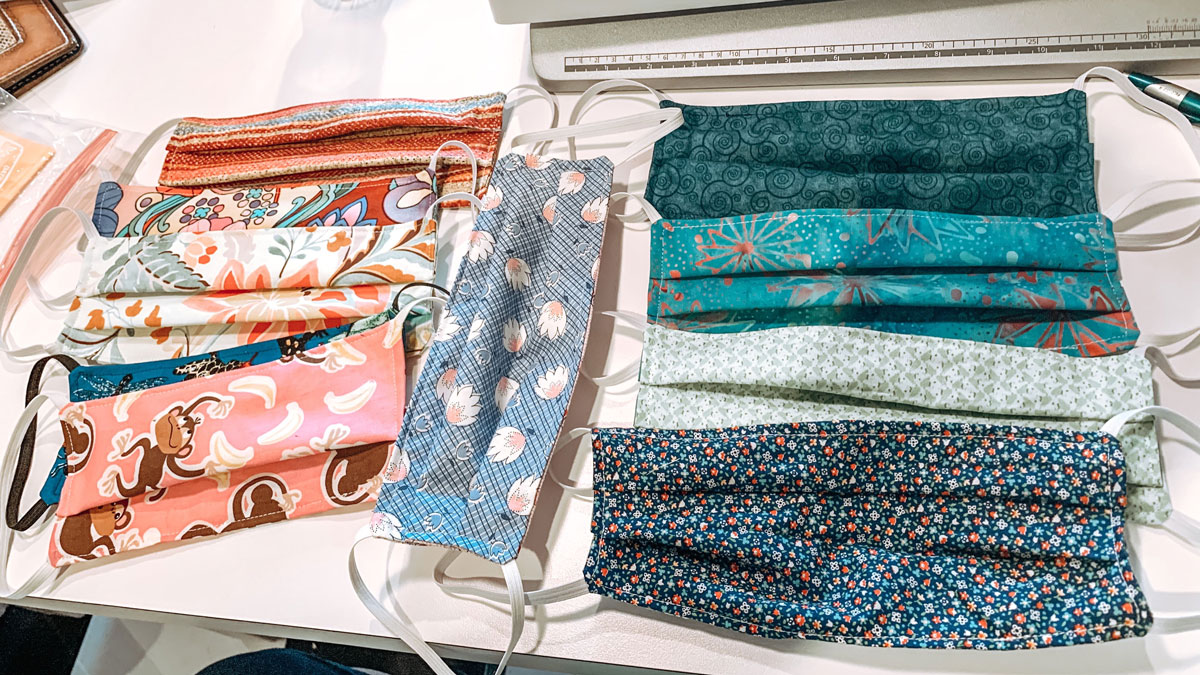In Illinois and across the country, officials recommend people cover their faces when out in public and some Chicago suburbs are even requiring it. For many, that means making homemade options.
But what should you know before delving into DIY tutorials or downloading sewing patterns?
Here's a breakdown:
Why Should you Wear a Mask?
Citing new data that a "significant portion" of people infected with the novel coronavirus can spread the virus to others even when they don’t have symptoms, the Centers for Disease Control and Prevention revised its recommendation, saying that people should wear cloth face coverings "whenever people must go into public settings."
"A cloth face covering is not intended to protect the wearer, but may prevent the spread of virus from the wearer to others," the updated CDC website now reads. "This would be especially important in the event that someone is infected but does not have symptoms."
Are DIY Masks Effective?
Depending on the design, masks can limit the spread of a disease from an infected person and protect the person wearing them from infection.
In the case of COVID-19, transmission of the virus is thought to occur primarily through respiratory droplets, which can land in other people’s mouths or noses when infected people cough or sneeze. The droplets can also contaminate surfaces that others then touch before touching their faces.
Here, basic surgical masks — loose-fitting, disposable masks — might be helpful because if someone who is sick is wearing one, their infectious droplets could be trapped in the mask. Doctors and nurses wearing such masks may also be protected somewhat since they’re likely to be coughed or sneezed on.
But researchers also suspect the novel coronavirus, SARS-CoV-2, can linger in the air in very small droplets known as aerosols, which can be inhaled by people nearby.
In contrast to the N95 respirators, surgical masks are not intended to provide protection against aerosols. As a CDC blog explains, surgical masks "are designed to provide barrier protection against droplets, however they are not regulated for particulate filtration efficiency and they do not form an adequate seal to the wearer’s face to be relied upon for respiratory protection."
Compared with surgical masks or respirators, very little research has been done on cloth masks.
Still, according to the CDC, "cloth face coverings fashioned from household
items or made at home from common materials at low cost can be used as an
additional, voluntary public health measure."
What Materials Should You Use to Make a Mask?
The CDC offers tutorials that involve the use of:
- Cotton Fabric
- T-Shirt
- Bandana
Researchers at Cambridge University also studied which materials filter air best and can be used in an improvised mask, finding that, aside from surgical masks, a pillowcase and a 100% cotton t-shirt were the most suitable household materials.
To hold the mask to your face, you can use:
- Elastic
- Rubber bands
- String
- Cloth strips
- Hair ties
How Should You Wear a Mask?
According to the CDC, cloth face coverings should—
• fit snugly but comfortably against the side of the face
• be secured with ties or ear loops
• include multiple layers of fabric
• allow for breathing without restriction
• be able to be laundered and machine dried without damage or
change to shape
What Are Some Things You Shouldn't Do?
- Don't put cloth face coverings on young children under the age of
2 or anyone who has trouble breathing, is unconscious, incapacitated or
otherwise unable to remove the cloth face covering without assistance, the CDC notes. - Do not to touch your eyes, nose, and mouth when removing a cloth face covering and wash your hands immediately after removing.
- And don't use materials that are needed for healthcare workers. "The cloth face coverings recommended are not surgical masks or N-95 respirators," the agency added. "Those are critical supplies that must continue to be reserved for healthcare workers and other medical first responders, as recommended by current CDC guidance."
Should You Wash Your Homemade Mask?
The CDC advises routinely washing a homemade mask, but how often you should wash them should be determined by how often you are using them. A washing machine should properly sterilize a mask, the CDC suggests.



